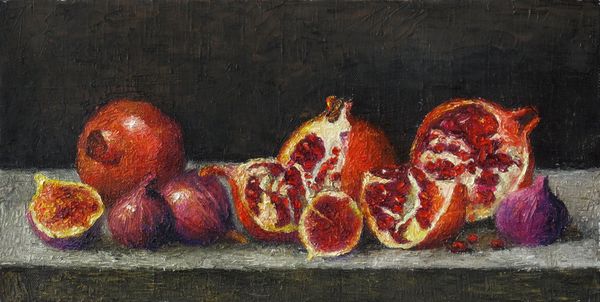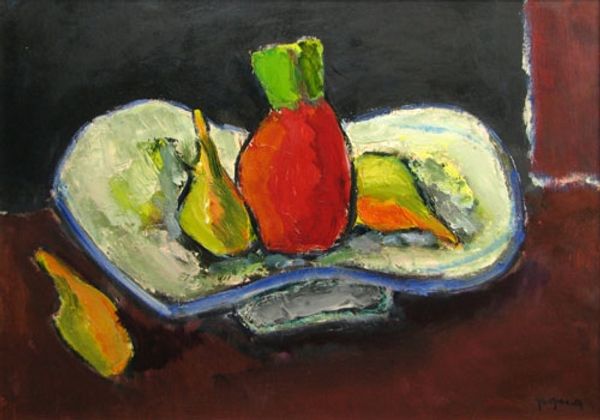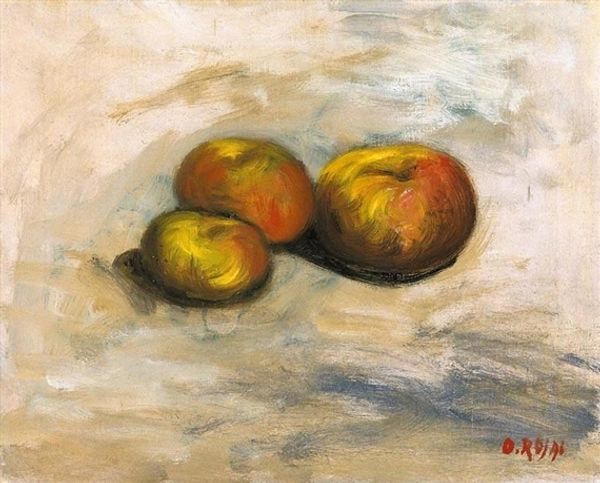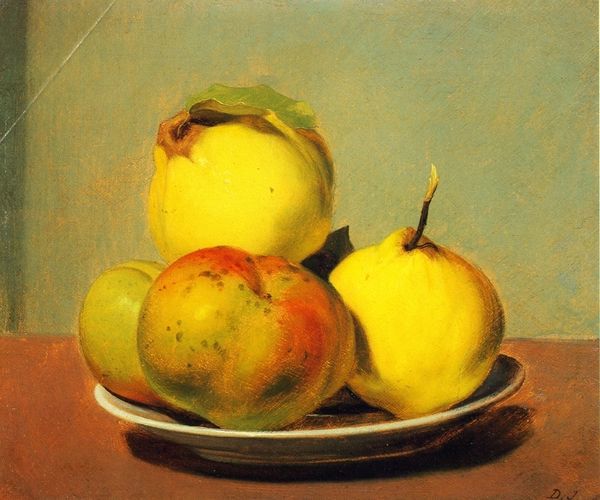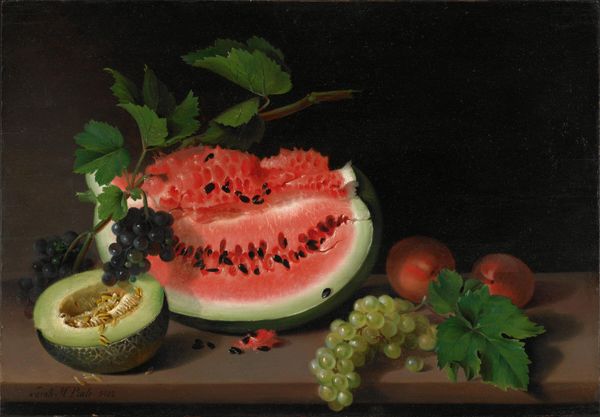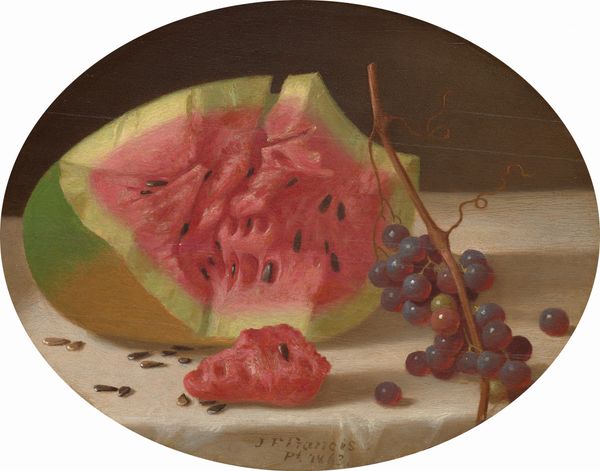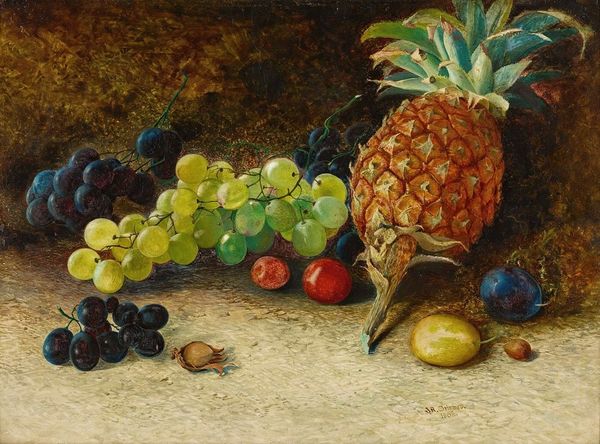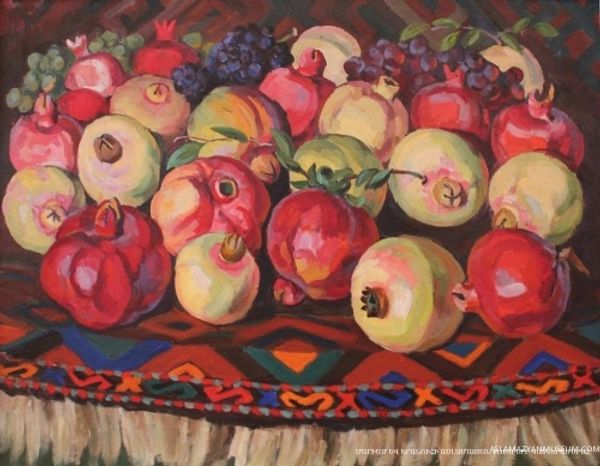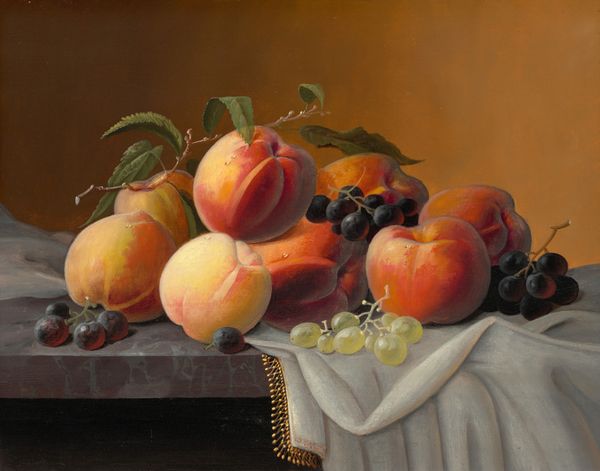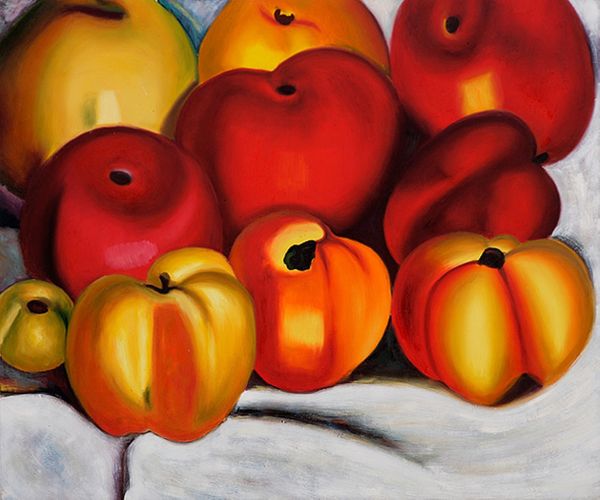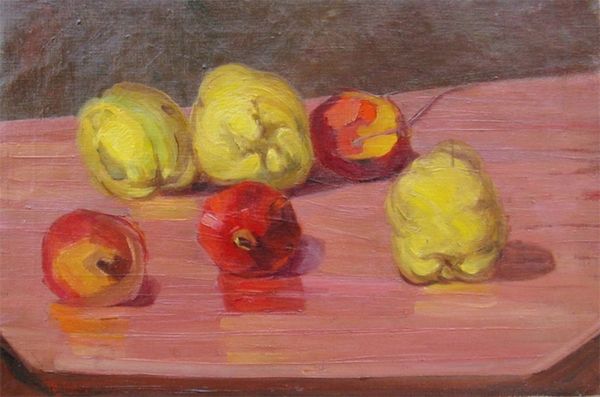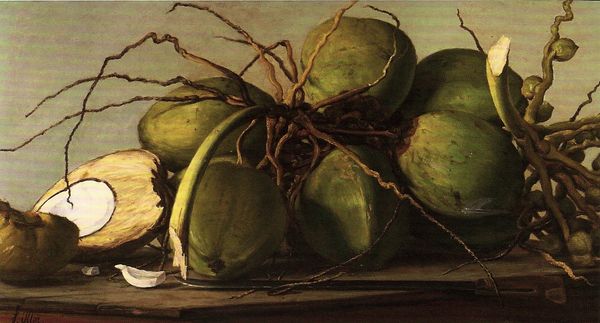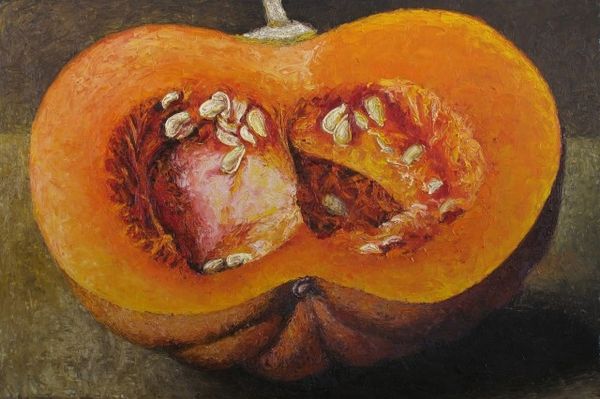
oil-paint, photography, impasto
#
still-life
#
gouache
#
food
#
oil-paint
#
photography
#
oil painting
#
impasto
#
fruit
#
plant
#
realism
Copyright: Alexander Roitburd,Fair Use
Curator: Alexander Roitburd's "Whatermelon," created in 2010 using oil paint, offers a contemporary take on the classic still life genre. What are your initial impressions? Editor: Well, beyond its playful title, it feels quite heavy. The impasto technique gives the surface a tactile quality, emphasizing the physical presence of the fruit rather than just its image. I’m struck by the weight of the materials. Curator: Roitburd, known for his politically charged works, often infuses seemingly simple subjects with deeper meaning. Consider the watermelon as a contested symbol, laden with cultural baggage in certain contexts. How might we interpret it here? Editor: That’s interesting. On a basic level, the materials are cheap, easily accessible, and reference the history of oil painting in post-Soviet spaces with a lack of materials. Maybe it is a commentary on access and representation, reclaiming a loaded object through the act of painting. The visible brushstrokes draw attention to the labor involved. Curator: Precisely! The painting elevates the everyday object, giving the common watermelon a new dimension. Think about the art historical weight it is presented against - often still lifes were commissioned by the wealthy to show off riches, a luxury. Here, Roitburd seems to use impasto to highlight materiality and, potentially, critique previous notions of value. The melon sits heavy on the 'shelf.' Editor: It makes me wonder about the artist’s process. Was this about rendering light and shadow, or something more conceptual? There is a knife there. Considering that gesture, perhaps there's something subversive in portraying this fruit so directly, challenging us to confront these associations head-on. Curator: Absolutely. And the starkness, that singular knife – could it be a suggestion of violence, a disruption of the idyllic nature of a typical still life? This forces us to unpack its meaning, considering the complex interplay of representation, history, and lived experience. Editor: I see your point. It does resist easy consumption, both literally and figuratively. It’s not just a pretty picture; it is asking questions. By considering the artist's technique and those underlying layers, we've turned over ideas that stretch past 'face value'. Curator: Indeed. By engaging with both material presence and sociocultural narratives, Roitburd compels us to actively participate in meaning-making. We see a watermelon but contemplate so much more.
Comments
No comments
Be the first to comment and join the conversation on the ultimate creative platform.
